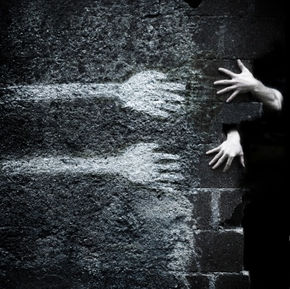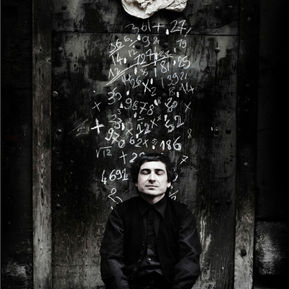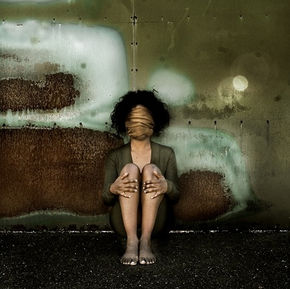FOTOTECA SIRACUSANA
PHOTOGALLERY - FOTOGRAFIA VINTAGE - BIBLIOTECA TEMATICA - CAMERA OSCURA B&W - DIDATTICA
SCRIPTPHOTOGRAPHY
DOROTY - SHOES (USA)

DOROTHY-SHOES
Nulla è più terribile di un tradimento, soprattutto se a tradirci è il nostro corpo. Noi possiamo determinare il nostro destino, ci sentiamo capitani di noi stessi ma siamo inermi contro un malanno, specie se si tratta di una patologia degenerativa. Da questa drammatica consapevolezza, ha scritto Cioran, proviene “la coscienza di avere un corpo, ecco cos’è l’assenza di salute”. Davanti a una malattia degenerativa ci troviamo di fronte a uno specchio vuoto: nell’immagine riflessa il presente è superato, vinto dall’incombere di un futuro che si prefigura doloroso; e dunque di fronte a quello specchio vuoto non ci riconosciamo più. La giovane fotografa francese Dorothy-Shoes, affetta da Sclerosi multipla, con la serie “ColèresS Planquées” si è interrogata proprio su come ricucire lo specchio vuoto, su come cioè rappresentare le sue personali interpretazioni circa un corpo che tradisce. I soggetti raffigurati non sono lì per caso, sono persone prossime alla fotografa e sono anch’essi affetti, in forme più o meno gravi, dalla stessa patologia. Le fotografie di “ColèresS Planquées” rimandano a una condizione che non conosciamo, sebbene si contino solo in Europa più di 300 000 casi. Una narrazione dunque come antidoto alla malattia, un grido che convoglia speranza e scoramento fino a rivestire la quotidianità di un rugginoso e profondo senso di incertezza dalla quale è difficile uscire. Ma “ColèresS Planquées” è lontano dall’essere un trattato clinico, la sua cifra è un’altra e si spende sul terreno concettuale che è attento a una composizione felicemente a metà strada tra una “metafisica del dolore” e un surrealismo “ribellista”. Ogni fotografia ha una sua particolare tensione, segno della “multiformità” degli effetti ma in tutte, proprio tutte, sono legate come da un legame col quale è sancito l’ingaggio contro il male. Gli effetti rappresentati non sono che una quotidianità fermata sul ciglio descrittivo e ampliati dalla difformità sintomatica ma il quadro complessivo non deroga mai dalla ricerca di una dolente eleganza che sa di rispettosa vicinanza. Osserviamo dunque corpi che non obbediscono ai comandi nervosi, messi in moto da una ribellione derelitta colti nel “mentre” della loro manifestazione; e dove più subdolo si annida il male ecco la traduzione metafisica di occhi velati alle cose del mondo e bocche che non conosceranno più il piacere del bacio dell’amante. Tutto si trasforma, tutto si corrode, anche il ricordo di quel che si è stato. E forse è questa la pena più amara. Poi, come un rapido mutare del vento, Dorothy-Shoes decide di narrarci delle piccole storie, intime e personali. In “Monologues&Dystopies” una poesia aleggia corsara. Scorribande di sensi, di ribellioni congelate da un obiettivo caldo e partecipe, le fotografie di questa serie scorrono su due binari solo apparentemente destinati a essere paralleli. In realtà Dorothy-Shoes ha imbastito un arabesco immaginifico nel quale il monologo intimo, il malessere dal profondo, dialoga “apertis verbis” con il sentimento collettivo di una deriva di là da venire, una distopia; un mondo che temiamo e al quale ci ribelliamo con ogni forza. Non inganni il catalogo delle interpretazioni: ognuno, sembra dirci la giovane fotografa e noi siamo d’accordo, si ribella come sa, come può. Così, dal ragazzino “soffocato” dal ruolo di scolaro che lo accompagnerà passando per l’estraneità meditabonda fatta di numeri e cifre, alla richiesta d’incontro tra due mani vere e due accennate come un graffito si viene colpiti da un idealismo insurrezionalista che dimora nel sentimento di libertà. In “Monologues&Dystopies” vediamo un surrealismo venire in soccorso di un realismo d’intenti, due istanze che dialogano sul terreno dell’immaginario e che trovano la sintesi in una composizione svolta ancora felicemente. Storie, si diceva, forse favole, brevi racconti intrisi di un desiderio che muove i suoi passi in un labirinto di voci con la sola voglia di unire le voci di un racconto che, a ben leggere, è quello di ognuno di noi.
Giuseppe Cicozzetti
da “ColèresS Planquées”;“Monologues&Dystopies”.
foto Dorothy-Shoes
Nothing is more terrible than a betrayal, especially if it is our body that betrays us. We can determine our destiny, we feel captains of ourselves but we are defenseless against a disease, especially if it is a degenerative pathology. From this dramatic awareness, wrote Cioran, comes "the consciousness of having a body, that's what is the absence of health". In front of a degenerative disease we find ourselves in front of an empty mirror: in the reflected image the present is overcome, overcome by the incombere of a future that is a painful one; and therefore in front of that empty mirror we no longer recognize ourselves.
The young French photographer Dorothy-Shoes, suffering from multiple sclerosis, with the series "ColèresS Planquées" questioned herself precisely on how to mend the empty mirror, on how to represent her personal interpretations about a body that betrays. The subjects depicted are not there by chance, they are people close to the photographer and are also affected, in more or less serious forms, by the same pathology.
The photographs of "ColèresS Planquées" refer to a condition we don’t know, although there are more than 300,000 cases just in Europe. A narrative, therefore, as an antidote to illness, a cry that conveys hope and discouragement to the everyday life of a rusty and deep sense of uncertainty from which it is difficult to came out.
But "ColèresS Planquées" is far from being a clinical treatise, its figure is different and he spends on the conceptual terrain that is attentive to a composition happily halfway between a "metaphysics of pain" and a "rebellious" surrealism . Each photograph has its own particular tension, a sign of the "multiformity" of the effects, but in all of them, all of them, are linked by a bond with which the engagement against evil is sealed.
The effects represented are nothing but a daily life stopped on the descriptive edge and expanded by symptomatic differences but the overall picture never derogates from the search for a painful elegance that is aware of respectful proximity. So we observe bodies that do not obey nervous commands, set in motion by a derelict rebellion caught in the "while" of their manifestation; and where the most subtle is lurking evil here is the metaphysical translation of eyes veiled to the things of the world and mouths that will no longer know the pleasure of the kiss of a lover.
Everything is transformed, everything is corroded, even the memory of what has happened. And perhaps this is the most bitter sentence. Then, like a rapid change of the wind, Dorothy-Shoes decides to tell us little stories, intimate and personal. In "Monologues & Dystopies" a poem hovers corsair. Raids of senses, of rebellions frozen by a warm and participatory lens, the photographs of this series run on two tracks apparently destined to be parallel. In fact, Dorothy-Shoes has set up an imaginative arabesque in which the intimate monologue, the malaise from the deep, dialogues "apertis verbis" with the collective feeling of a coming drift, a dystopia; a world that we fear and to which we rebel with every strength.
Do not deceive the catalog of interpretations: everyone, the young photographer seems to tell us and we agree, rebels as you know, as you can. So, from the kid "stifled" from the role of a pupil who will accompany him passing through the thoughtless strangeness made of numbers and figures, to the request of meeting between two real hands and two hinted as a graffiti you are struck by an insurrectionist idealism that dwells in the feeling of freedom.
In "Monologues & Dystopies" we see a surrealism coming to the rescue of a realism of intent, two instances that dialogue on the terrain of the imaginary and find the synthesis in a composition that is still happily carried out. Stories, it was said, perhaps fables, short stories imbued with a desire that moves his steps in a maze of voices with the sole desire to combine the voices of a story that, well read, is that of everyone of us.
Giuseppe Cicozzetti
From “ColèresS Planquées”; “Monologues&Dystopies”.
ph. Dorothy-Shoes











